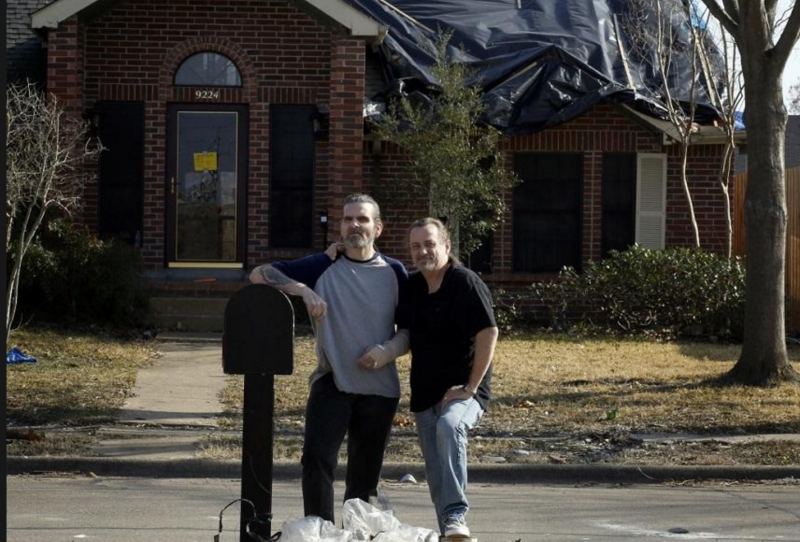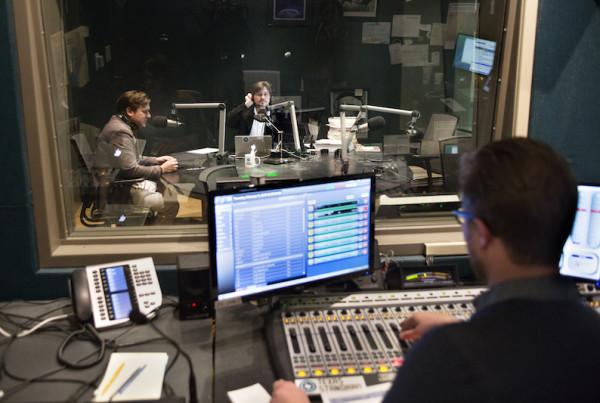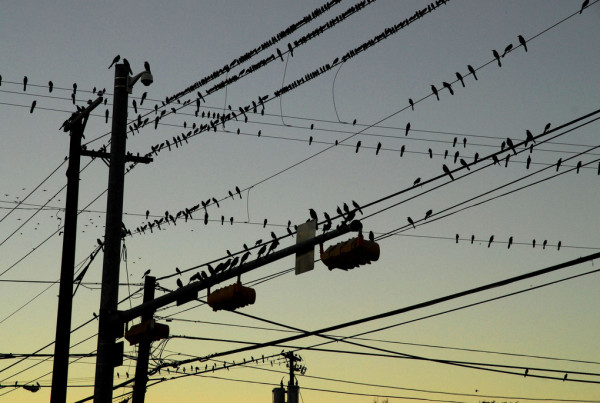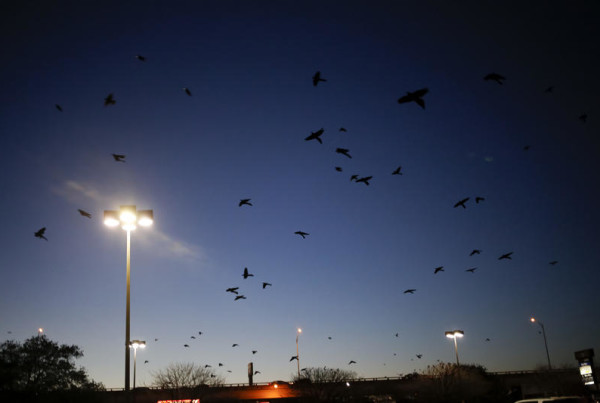This story originally appeared on KERA News.
Alfredo and Anthony Fowler-Rainone barely made it inside their laundry room before the worst of the storm slammed into the house.
“Hugged each other, held the dogs tight. Felt the house lift up, jam down,” Anthony says. “And I just yelled out, we’re hit!”
Three Decades Of History
Anthony’s owned this home for almost 30 years, Alfredo joined him a decade ago. They tied the knot in New York in 2011, before same-sex marriage was legal in every state.
It’s been a very happy home, Alfredo says. Even though a tornado peeled off the roof, twisted the second story and skewered the drywall with two-by-fours.
“I mean I’m so stressed out, half the time I’m ready to start screaming at somebody,” says Alfredo.
Hiring engineers and contractors to evaluate tornado damage is pretty taxing. Anthony says it gets worse when you thought you had more than enough insurance, then realize your homeowner’s policy won’t cover the full cost of repairs.
Coming Up Short When Costs Are Figured
“I went from being way over-insured to sweating bullets and being underinsured,” Anthony says.
They’ll be about 20 thousand dollars short when all is repaired, rebuilt and replaced. Alfredo is 49, Anthony is 53. They don’t have much in savings and live on $2,100 a month in disability payments. They can’t work overtime or pick up extra shifts. All they can really do? Chop every ounce of fat from their budget.
Read more about the Fowler-Rainones here.
KERA reporter Courtney Collins has been covering the lasting effects of the tornado damage in North Texas. She says they wanted to look at what happened after TV cameras packed up and non-profits had moved on.
“Many people were really just starting on the road to recovery,” she says. “They needed to be heard and their stories didn’t need to be forgotten quite yet.”
Collins says she’s never been through anything like the clean-up and recovery these tornado victims have gone through.
“You really learn what it takes – what it takes of a person,” she says. “If you haven’t been through it, it’s really hard to imagine starting from square one.”
Nobody keeps up with their insurance properly, Collins says, checking it every six months and re-inventorying their possessions to update their coverage.
“It is on the consumer, it’s the consumer’s responsibility to update their policy and make sure their coverage is enough,” she says. “But no one is really that vigilant because nobody thinks this is going to happen.”
The construction industry is booming, so construction costs are sky-high because of low supply levels. A year from now, Collins says some will be back in their home but many will still be in flux.
“Many people will still be in the throes of construction a year after this happened,” she says. “People that were renters and have moved on to new places will probably be settled in and moving on, but I think that year anniversary is going to mean so much to every single person who was touched by this, whether they were a homeowner or a renter.”















